目录
1)SmoothStep(t1,t2,x) - SmoothStep(t2,t3,x)
2)SmoothStep(t1,t2,x) - SmoothStep(t3,t4,x)
一、SmoothStep函数
float SmoothStep(float t1, float t2, float x)
{
x = clamp((x-t1)/(t2-t1),0.0,1.0);
return x*x*(3-2*x);
}二、基础图像
情况一:t1 > t2
以t1 = 3, t2 = -2 为例 , SmoothStep(3,-2,x)的图像如下:

由图像可知,x <= -2 时,返回1, x >= 3 时,返回0,-2 < x < 3 时,返回值由1逐渐减少至0。
即对于SmoothStep(t1,t2,x)(t1>t2),x <= t2 时, 返回1,x >= t1 时,返回0,t2 < x < t1 时,随着x的增大返回值逐渐由1减少至0。
我们用一个材质球表示,我们将模型空间的y坐标传入x变量,得出的材质效果如下:
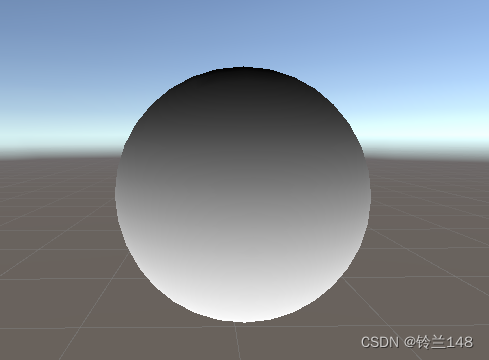
由上到下是黑到白的渐变,渐变区的宽度取决于 t1 - t2 的大小。
情况二:t1 < t2
以t1 = -2, t2 = 3 为例 , SmoothStep(-2,3,x)的图像如下:

由图像可知,x <= -2 时,返回0, x >= 3 时,返回1,-2 < x < 3 时,返回值由0逐渐增加至1。
即对于SmoothStep(t1,t2,x)(t1<t2),x <= t1 时, 返回0,x >= t2 时,返回1,t1 < x < t2 时,随着x的增大返回值逐渐由0增加至1。
我们用一个材质球表示,我们将模型空间的y坐标传入x变量,得出的材质效果如下:

由上到下是白到黑的渐变,渐变区的宽度取决于 t2 - t1 的大小。
三、两个SmoothStep函数相减的图像
1)SmoothStep(t1,t2,x) - SmoothStep(t2,t3,x)
以t1 = -2,t2 = 0 ,t3 = 2 为例 ,SmoothStep(-2,0,x)- SmoothStep(0,2,x)的图像如下:

由图像可知,x <= -2 或 x >= 2时,返回0, x = 0 时,返回1,-2 < x < 2 时,返回值在[0,1]范围内。
我们用一个材质球表示,我们将模型空间的y坐标传入x变量,得出的材质效果如下:
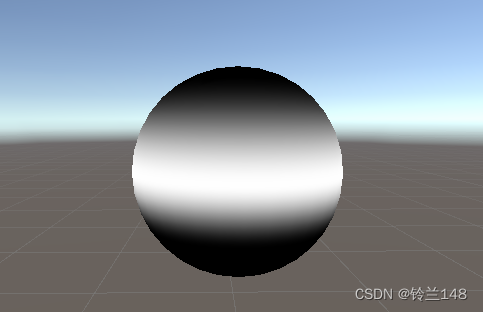
2)SmoothStep(t1,t2,x) - SmoothStep(t3,t4,x)
以t1 = -2,t2 = -1 ,t3 = 1 ,t4 = 2 为例 ,SmoothStep(-2,-1,x)- SmoothStep(1,2,x)的图像如下:
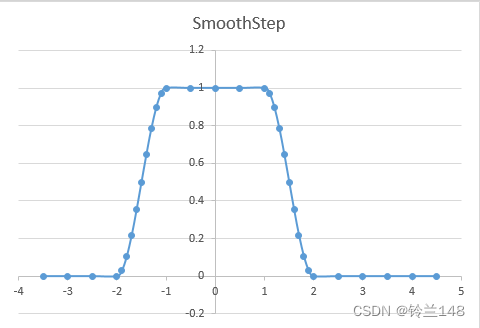
由图像可知,x <= -2 或 x >= 2时,返回0, -1 <= x <= 1 时,返回1,-2 < x < -1 或 1 < x < 2 时,返回值在[0,1]范围内。
我们用一个材质球表示,我们将模型空间的y坐标传入x变量,得出的材质效果如下:
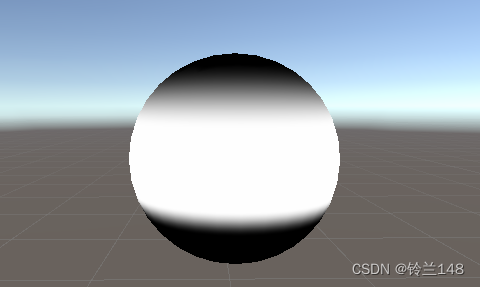
两个SmoothStep函数相减,可以做出圆环的效果。
四、SmoothStep节点的应用
对于SmoothStep(edge1,edge2,In)
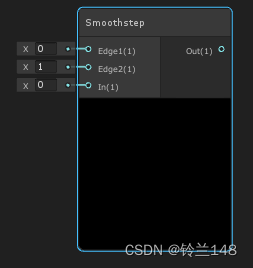
1)In < edge2, edge1 作为自变量
由基础图像我们可知:
当 In < edge2 < edge1 时,返回1
当 In < edge1 < edge2 时,返回0
当 edge1 < In < edge2 时,返回[0,1]且随着edge1减小,返回值由0增加至1
以上三条关系式中,edge1逐渐减小,我们固定两个常量In < egde2,让edge1作为自变量,传入模型坐标的y分量,材质如图:

2)edge2 < In, edge1 作为自变量
由基础图像我们可知:
当 edge1 < edge2 < In 时,返回1
当 edge2 < edge1 < In 时,返回0
当 edge2 < In < edge1 时,返回[0,1]且随着edge1增大,返回值由0增加至1
以上三条关系式中,edge1逐渐增大,我们固定两个常量egde2 < In,让edge1作为自变量,传入模型坐标的y分量,材质如图:

3) In < edge1, edge2 作为自变量
由基础图像我们可知:
当 In < edge1 < edge2 时,返回0
当 In < edge2 < edge1 时,返回1
当 edge2 < In < edge1 时,返回[0,1]且随着edge2减小,返回值由1减小至0
以上三条关系式中,edge2逐渐减小,我们固定两个常量In < edge1,让edge2作为自变量,传入模型坐标的y分量,材质如图:

4) edge1 < In, edge2 作为自变量
由基础图像我们可知:
当 edge2 < edge1 < In 时,返回0
当 edge1 < edge2 < In 时,返回1
当 edge1 < In < edge2 时,返回[0,1]且随着edge2增大,返回值由1减小至0
以上三条关系式中,edge2逐渐增大,我们固定两个常量edge1 < In,让edge2作为自变量,传入模型坐标的y分量,材质如图:

五、用SmoothStep做有边缘的模型裁切效果
思路:用Step节点做模型裁切效果,用SmoothStep节点加上边缘效果
新增四个Properties:
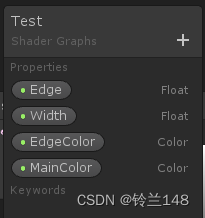
其中Edge用来控制裁切高度,Width用来控制边缘宽度,EdgeColor是边缘颜色,MainColor是模型的整体颜色
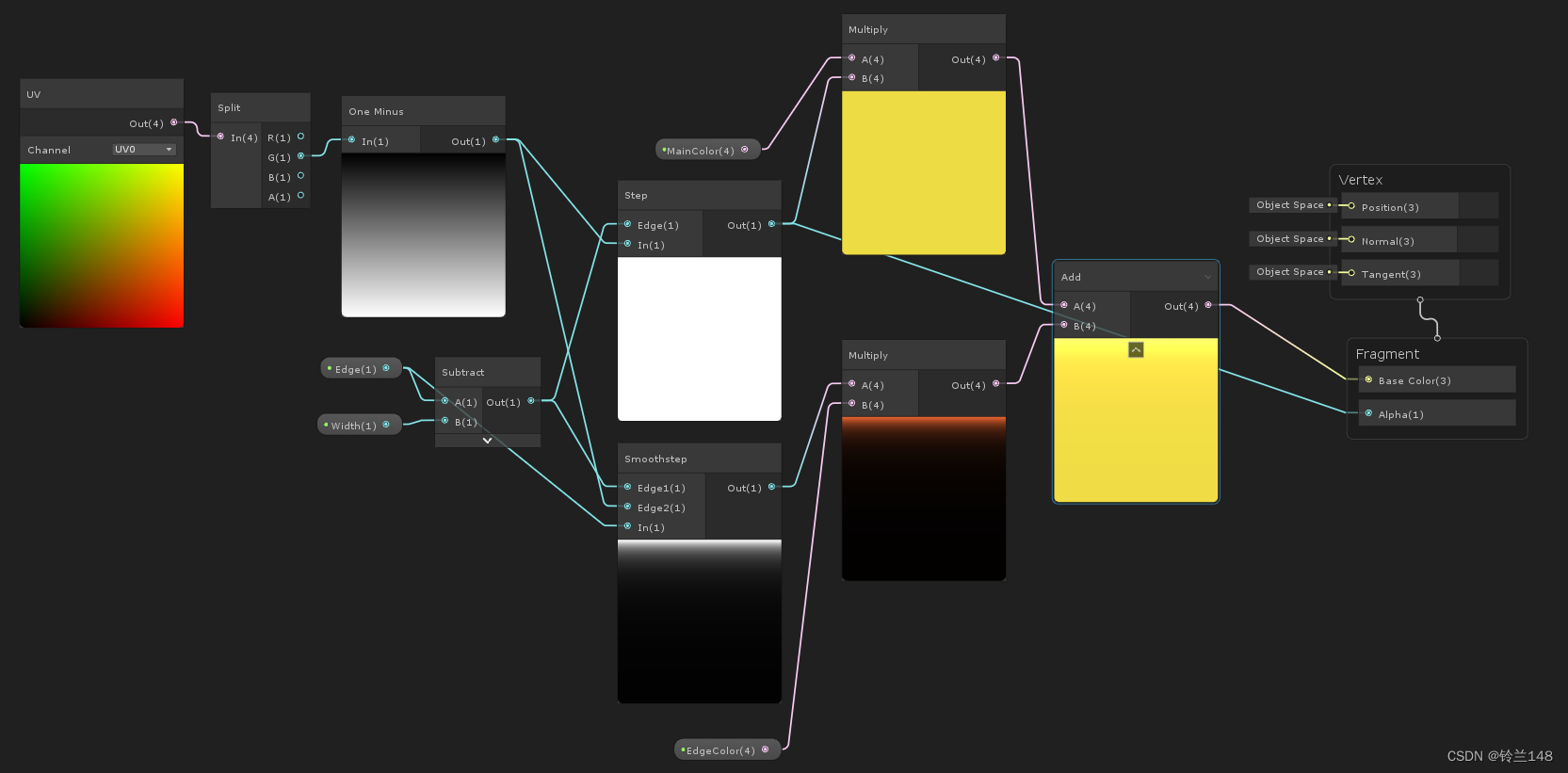
效果:
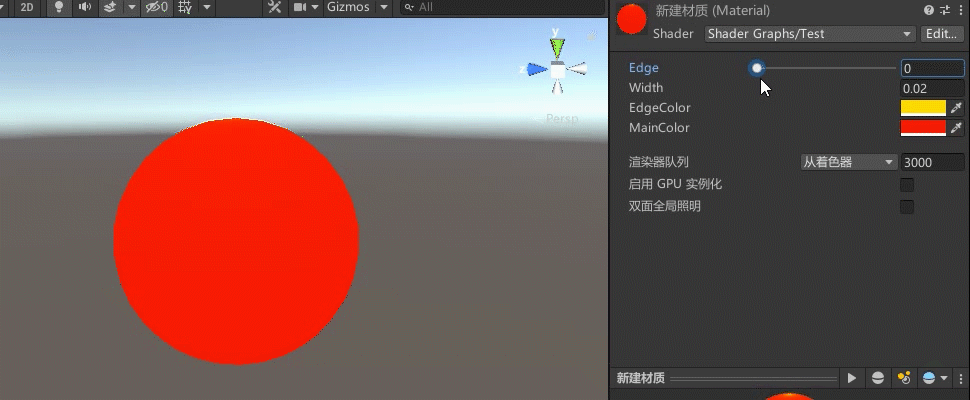
(函数的图像直接用的excel,excel里面没有自带的clamp函数,可以用Median函数实现,Median函数返回一组数中的中间值,对于Median(0,x,1),当x < 0,返回0,当x > 1,返回1,当x处于[0,1],返回x自身。)